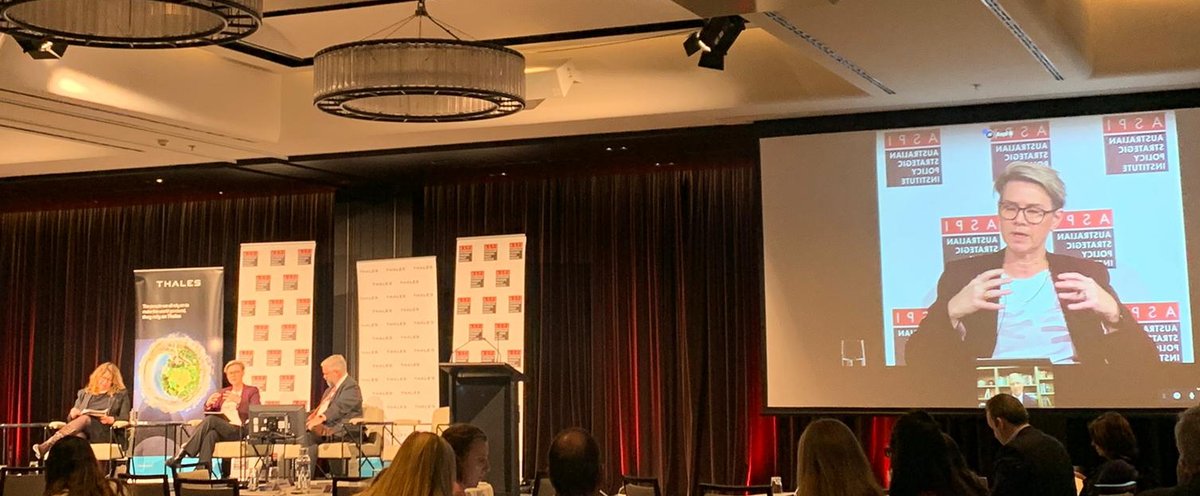
Anastasia Kapetas leads the Session 3 discussion on 'The United States in the Indo-Pacific and in the grey zone' at #ASPIConference2021 with panellists @lgflake, @lesleyseebeck & @NewshamGrant
Follow the thread to tune in!
Follow the thread to tune in!
‘Australia has a very important role to play in shaping US views, perception, and understanding of grey zone activities in this region, and the region writ large... When it comes to the grey zone, Australia is at the forefront... the US is much less exposed' @lgflake 

The one area where the Biden administration is not yet back, according to @lgflake is trade and trade policy.
‘Unless the United States is in the TPP, it does not have an economic leadership role in the economic infrastructure of the Indo-Pacific'
‘Unless the United States is in the TPP, it does not have an economic leadership role in the economic infrastructure of the Indo-Pacific'
.@lgflake warns that while Australia has provided a regional example of resistance to Chinese coercion, this doesn’t mean all other Indo-Pacific countries will act in the same way
.@lesleyseebeck comments that grey zone actors ‘are exploiting all the gaps, the fractions, and fissures that have been emerging in the international system over the last 30 years’ 

Three recommendations from @lesleyseebeck
1⃣ Posture: creating infrastructure & positive approaches
2⃣ Principles: we need to double down on democracy but also demonstrate the values we expect from other nations
3⃣ Partnerships: How do we build up relationships in our region?
1⃣ Posture: creating infrastructure & positive approaches
2⃣ Principles: we need to double down on democracy but also demonstrate the values we expect from other nations
3⃣ Partnerships: How do we build up relationships in our region?
.@NewshamGrant suggests introducing an ‘Economic Article 5’ to address grey zone activities like economic coercion. That way ‘if one of your friends get pressured economically by someone, you help them’ 

@NewshamGrant echos @lesleyseebeck that 🇦🇺 must 'play to our strengths' rather than responding to grey zone activities in kind
He states ‘Don’t try to match these grey-zone activities act for act... it’s better to apply pressure elsewhere, where the other side will feel it more’
He states ‘Don’t try to match these grey-zone activities act for act... it’s better to apply pressure elsewhere, where the other side will feel it more’
.@lgflake emphasises the need for clear distinctions to direct our understanding of grey zone activities.
‘Understanding these activities requires a deeper level of specificity’. Nations must know the difference between the ‘Three C’s’:
- Competition
- Coercion
- Corruption
‘Understanding these activities requires a deeper level of specificity’. Nations must know the difference between the ‘Three C’s’:
- Competition
- Coercion
- Corruption
Session 3 of the #ASPIConference2021 has finished!
In 'The United States in the Indo-Pacific and in the grey zone', panellists considered how 🇺🇸 & 🇦🇺 can work together to address shared grey zone challenges
In 'The United States in the Indo-Pacific and in the grey zone', panellists considered how 🇺🇸 & 🇦🇺 can work together to address shared grey zone challenges
• • •
Missing some Tweet in this thread? You can try to
force a refresh










